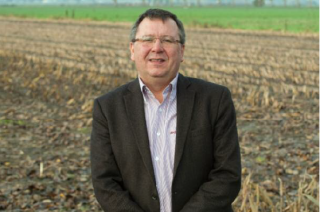
Testimonial
Oscar Schoumans about his work at Wageningen Environmental Research
For the last twenty-five years, researchers have been warning that maize fields and grasslands contain ever-increasing amounts of phosphate. But it took until 1 January 2010 before regulations were introduced to reduce the amounts of manure farmers are allowed to spread on soils high in phosphate. Phosphate researcher Oscar Schoumans says: ‘This means we’ll have to make manure processing more profitable.’
At last something is being done about the phosphate problem
On 24 March 2009, Oscar Schoumans was working as usual in his office in Wageningen. He was answering e-mails, preparing a poster on innovative manure-processing methods, and finishing an article. At some moment during this day, probably in the morning, the Dutch Ministry of Agriculture, Nature and Food Quality sent a memorandum called Fourth Dutch Action Programme on the Nitrate Directive (2010–2013) to the Lower Chamber of Parliament. Nothing special, one might think. But this memorandum included a few pages based on the results of thirty years of phosphate research.
Both the Lower Chamber and the European Union have since accepted the proposals made in the memorandum. ‘This is the first time something is actually being done about the phosphate problem’, says an enthusiastic Schoumans in his Wageningen Environmental Research office, as he pulls some maps showing phosphate-saturated soils out of a filing cabinet. ‘Twenty-five years ago we were already warning that phosphate was becoming a problem in areas with a manure surplus. In 1986 we made the first maps showing phosphatesaturated soils. Another few years of research showed how much phosphate was accumulating in the soil. Although manure legislation was soon tightened up after that, farmers were still allowed to spread more phosphate than their crops needed. It’s only since 1 January 2010 that they have to adapt the manure applications to the amount of phosphate already contained in the soil. If the concentration is too high, they’re no longer allowed to spread more phosphate than the crop can take up from the soil.’
Read the whole story "Made by Alterra"
Recent projects and publications by Oscar Schoumans: